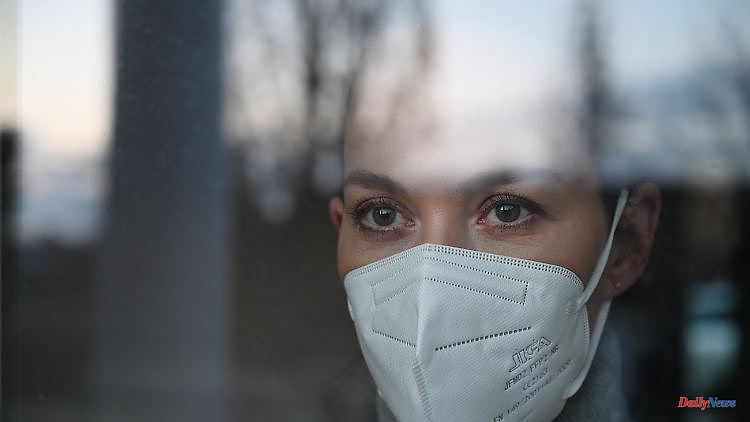In the third winter after the outbreak of the coronavirus pandemic, Germany is experiencing an exceptionally high rate of infection. However, the majority of respiratory diseases - at least so far - are not due to the Covid pathogen Sars-CoV-2. Which viruses are currently in circulation?
Laboratory data from the stocks of the Robert Koch Institute (RKI) paint an unexpectedly clear picture: In the ongoing wave of infections at the beginning of winter 2022/23, coronavirus infections have so far only played a minor role. The vast majority of respiratory diseases currently circulating are caused by other viruses. For the first time since the beginning of the coronavirus pandemic, Sars-CoV-2 is no longer the biggest problem in the German healthcare system.
The exceptionally high level of infection in recent weeks has - so far at least - other causes: influenza viruses can currently be detected in more than half of the patient samples analyzed as part of the virological monitoring, i.e. the pathogens of the real flu. More than every sixth sample contains respiratory syncytial viruses (RSV), which can be particularly dangerous for infants and small children. Corona viruses of the type Sars-CoV-2 - responsible for the Covid 19 pandemic - recently only appeared with shares of less than five percent.
Note: Data and infographics are updated regularly.
"According to the results of virological sentinel surveillance, the large number of respiratory diseases is mainly due to the strong circulation of influenza viruses, followed by RSV," confirmed the RKI experts in the most recent weekly report on the corona situation. Sars-CoV-2 has therefore only been detected in less than every tenth sample since the beginning of November.
The data does not give reason for the all-clear: The information from the virological monitoring is based on a comparatively small sample. On average, only around 250 swabs from all over Germany are evaluated week after week at the National Reference Center for Influenza Viruses. The number of corona cases is currently clearly increasing nationwide.
After all, the laboratory-based early warning system works independently of the testing and reporting behavior in the population: the samples sent in by doctors are tested in the laboratory using a PCR test for a whole bunch of typical pathogens of respiratory diseases. This gives a broad picture of the current viral load in Germany. In the Influenza Working Group (AGI) of the RKI, the data, together with the findings from other early warning systems, are incorporated into the assessment of the German infection process.
The virus detections from the sample come from so-called sentinel practices, i.e. from general practitioners who, according to a defined scheme, take swabs in the nose and throat of randomly selected patients with acute respiratory diseases. The material sent in can then be extensively analyzed in the laboratory. The experts often find more than just one pathogen per sample.
The validity of the data obtained is limited: Due to the small number of completely analyzed patient samples, the laboratory data are only suitable for a rough overview of the infection process. The RKI is therefore trying to classify the results in detail in the regularly published weekly reports on the corona and influenza situation. The information is compared, for example, with the corona positive rates, the frequency of doctor visits and the corresponding diagnoses from the hospitals.
Together, the data from the various early warning systems provide a useful overview of the pandemic situation, even for laypersons. In view of the persistently high "infection pressure", the RKI urgently advises vaccination prevention (Covid and influenza) and compliance with the known precautionary measures, i.e. regular ventilation, hand washing and isolation in the event of illness. New dates are due for release on December 21st. Then it will also become clear to what extent the increasing number of reported coronavirus infections is also reflected in the laboratory sample.












